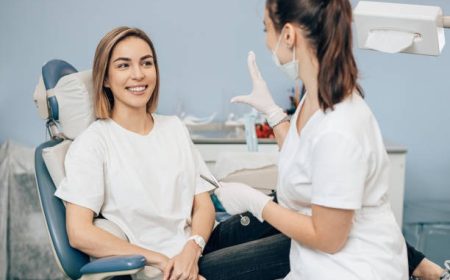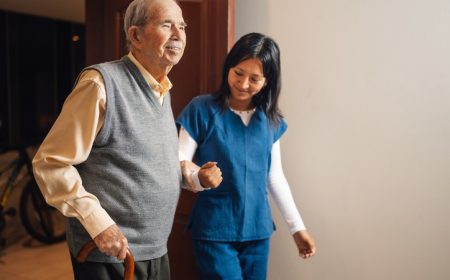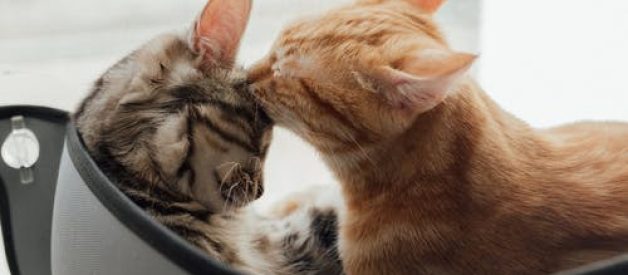Watching your beloved four-legged friend go through surgery can be as stressful for you as it is for them. Like any concerned pet parent, you eagerly await the moment they return to their normal, energetic selves.
Recognizing the signs of recovery is crucial for ensuring your pet gets back on its paws as promptly and safely as possible. In this comprehensive guide, we’ll help you understand the key signals that indicate your pet is healing well from surgery.
Signs of Post-surgery Recovered in Pets
Return to Normal Appetite and Hydration
One of the most noticeable signs that your pet is rebounding after surgery is a return to their typical eating and drinking habits. Post-surgery, pets might not feel like eating, or they might refuse water due to discomfort or the effects of anesthesia. As they recover, they will gradually begin to eat and drink normally. Keep an eye on their daily intake to ensure they’re getting the right amount of nutrition and hydration for optimal healing.
-
Interest in food, even if they start by eating smaller amounts
-
Gradual increase in food consumption to pre-surgery levels
-
Regular hydration, indicated by their normal drinking patterns
For those contemplating elective or necessary surgical procedures for their pets, choosing a highly-regarded surgical clinic is essential. Finding a trusted clinic akin to the Chuckanut Valley Vet Clinic ensures that your pet’s surgical needs are met with experience and compassion.
Regaining Energy and Mobility
Another positive indication of recovery is when your pet starts moving around more easily. This doesn’t mean they should be sprinting around the house or leaping on furniture – a gradual increase in activity is key. Overexertion can harm their recovery, but a noticeable improvement in how they walk, stand, and lay down is a great sign.
-
Increased strength and stability in their movements
-
Ability to stand up and lie down without visible discomfort
-
Interest in walks or playtime, even if still limited
Healing of Surgical Site
The surgical site itself provides significant insight into how well your pet is recovering. A healthy healing process involves the reduction of redness, swelling and the eventual healing of incisions. Continuous monitoring is important to catch any signs of infection or complications at this stage.
What to Look for at the Surgical Site:
-
Decreased swelling and redness
-
Incisions that are cleanly closed without discharge or opening
-
No unpleasant odor emanating from the wound area
Behavioral Improvements
After surgery, it’s not unusual for pets to act out of character. They might seem withdrawn, passive, or even slightly aggressive due to pain or discomfort. This is typically temporary. As your pet heals, their usual personality should shine through once again.
Positive Behavioral Changes Include:
-
Return to displaying affection and seeking attention
-
Reduced signs of pain, such as whimpering or growling when touched
-
Reengagement with family members and other pets
Resumption of Regular Bowel and Bladder Functions
It’s essential to monitor your pet’s bathroom habits post-surgery. Difficulties in this area can signal underlying issues. As they heal, regular bowel and bladder functions should resume. This means routine urination and defecation without signs of struggle or discomfort.
Follow-Up Vet Visits and Check-Ups
When your pet starts to mend, you’ll also notice that they get more positive feedback from your veterinary provider during follow-up visits. The vet may report improved wound healing and better mobility and can offer guidance on how to continue supporting your pet’s recovery.
Rest and Comfortable Sleep Patterns
Rest is a crucial component of the healing process for animals, just as it is for humans. Ideally, as your pet recovers, it will display more peaceful sleeping patterns without frequent awakenings due to discomfort or pain.
Reduction in Medication Dependency
If your pet was prescribed medication for pain or infection prevention post-surgery, another indicator they are healing is a decreased need for these medications. Always consult with your vet before modifying any prescribed treatment plan.
Caring for Your Pet Post-Surgery
While the above points will help you monitor your pet’s recovery from surgery, several other factors and services contribute to the overall well-being of your furry companion.
Pet Vaccination
One integral factor in maintaining your pet’s health is to ensure they are up-to-date with vaccinations. Vaccines are vital for preventing diseases that can be more dangerous for a pet with a compromised immune system post-surgery.
For instance, if you reside in the Pacific Northwest, finding a reliable provider for cat vaccinations in Bellingham, WA, can help keep your cat safe from various health threats.
Pet Boarding
Another crucial service for pet owners to consider, especially when travel or long work hours are involved, is pet boarding. Quality boarding ensures your pet is cared for and monitored while you’re away.
Boards can be especially helpful during the recovery period post-surgery when pets need a calm, controlled environment. Pet owners looking for such services may seek a reputable place for dog boarding in Bellingham, WA, where professional care is provided for their dogs in a comfortable setting.
Final Thoughts
At home, your role is to provide a safe and loving environment that promotes healing. Keep a close eye on your pet’s behavior and physical health, ensure they have a quiet and cozy place to rest, and maintain clear communication with your vet. By being attentive and caring, you can help your beloved pet get back to health after surgery.








